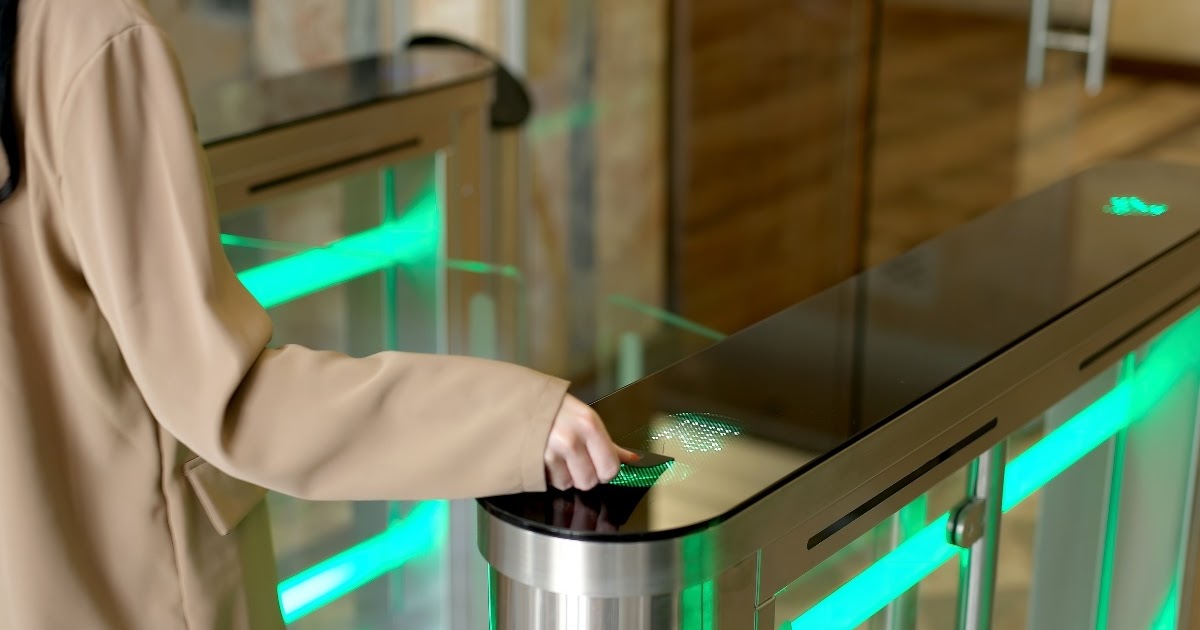In today’s rapidly evolving business landscape, safeguarding your premies, assets, and personnel has become more crucial than ever. The days of relaying soly on traditional locks and keys are long gone. Modern Enterprises Require Sophisticated Access Control Systems that Enhance Security, Streamline Operations, and Bost Efficiency.
Whomere You’re Considering Upgrading Your Existing System or Implementing Access control For the first time, this article will equip you with the knowledge to choose the right solution for your unique needs.
Undersrstanding access control systems
Access Control Systems Serve as the Foundation of Modern Business Security Infrastructure. These sophisticated setups go beyond simply locking doors; They create a Comprehensive Framework for Managing and Monitoring Who Enters Specific Areas Within Your Premies. By implementing Such Systems, Organisations Can Significantly Enhance Their Security Posture While Simultaneously improvised Improving Operational Efficiency.
At Its Core, An Access Control System Comprises Several Key Components Working in Harmony. These typically include:
- Access points: these are the physical barriers that control entry, such as doors, gates, or turns.
- Credentials: The means by which individuals Identify themselves to Gain Access, Ranging from Keycards to Biometric Data.
- Readers: devices that interpret the credentials presented and communicate with the Central System.
- Control panels: the ‘brain’ of the system, processing information from readers and determining access rights.
- Management Software: The Interface Through which Administrators Configure and Monitor The System.
Togeether, these elements create a robust ecosystem that allows businesses to exert precise control over who can enter specific ares and when. This level of granular management is invaluable for Organizations Dealing with Sensitive Information, Valuable Assets, Or that Simply Looking to Create a more Secure work environment.
Types of access control systems
The range of access control is divese, offering solutions to suit different business needs, security requires, and budgets. Undersrstanding the various types of access control systems Available is crucial for making an informed decision that aligns with your organization’s specific needs.
Standalone systems
Standalone Access Control Systems are self-contained units that operate independent at Each access point. These systems are ideal for small businesses or locations with a limited number of entry points.
Key features:
- Independent Operation at Each Door or Gate
- No Central Management System required
- Typically use keypads or card readers
- Suitable for Businesses with Simple Access Needs
Advantages:
- Cost-effective for small-scale implementations
- Easy to install and maintain
- No complex networking requires
Limitations:
- Limited scalability
- Challenging to manage multiple access points
- Lack of Centralized Control and Reporting
Networked Systems
Networked Access Control Systems Connect Multiple Access Points to a Central Management Platform. This type of system is Well-Suated for Medium to Large Businesses with Multiple Entry Points or Complex Access Requirements.
Key features:
- Centralized Management and Control
- Real-time monitoring and reporting
- Ability to manage multiple locations from a single interface
- Supports a wide range of credential types
Advantages:
- Scalable to Accommodate Business Growth
- Offers Comprehensive Access Logs and Audit Trails
- Enables Quick Updates to Access Rights Across the Entre System
Limitations:
- Higher Initial Cost Compared to Standalone Systems
- Requires network infrastructure
- May need ongoing it support
Cloud-based systems
Cloud-based Access Control Systems Leverage Internet Connectivity to offer remote management and enhanced flexibility. These Systems are Gaining Popularity Due to their scalability and Reduced Need for on-Premies Hardware.
Key features:
- Remote access and management via web or mobile apps
- Automatic Software Updates and Backups
- Integration with other cloud-based services
- Flexible subscription-based pricing models
Advantages:
- Reduced hardware and maintenance costs
- Easy to Scale and Adapt to Changing Business needs
- Enhanced Disaster Recovery and Business Continuity
Limitations:
- Reliance on Internet Connectivity
- Potential data security concerns
- Ongoing subscription costs
Biometric systems
Biometric Access Control Systems Use Unique Physical Characteristics, Such as fingerprints, facial features, or iris patterns, to verify identity and Grant ACESSS.

Key features:
- High Level of Security and Accuracy
- Eliminates the need for physical credentials
- Difability to forge or Duplicate
- Often Combined with Other Authentication Methods for Multi-Factor Security
Advantages:
- Enhanced Security Through Unique Biological Identifiers
- Reduces the Risk of Lost or Stolen Credentials
- Convenent for users (no need to carry cards or remumber pins)
Limitations:
- Higher Initial Cost
- Privacy Concerns Regarding Biometric Data Storage
- May face challenges in certain environments (EG, Dirty or Wet Conditions for Fingerprint Readers)
Mobile Access Systems
Mobile Access Control Systems Utilize Smartphones as Credentials, Leveragging Technologies Like Bluetooth or NFC to Grant Access.
Key features:
- Uses Smartphones as Access Credentials
- Often integrates with existing card-based systems
- Supports Remote Credential Issuance and Revocation
- Can offer additional features like geofencing and temporary access
Advantages:
- Convenient for Users (Most People Always Carry their phones)
- Reduces Costs Associated with Physical Credit Credit Management
- Enables Advanced Features Like Virtual Visitor Passeses
Limitations:
- Requires users to have compatible smartphones
- Potential Security Risks If Phones Are Lost or Stolen
- May face adoption challenges with some user groups
Each type of access control system offers unique benefits and consider. The choice between them will depend on factors
Choosing the right access control system for your business
Selecting the most suitable access control system for your Organization is a critical decision that can significantly impact your seconds posture and operational efficiency. With a large choice of options available, it’s essential to approach this choice methodically, considering various factors that align with your specific business business needs.
